Finding Bangladesh
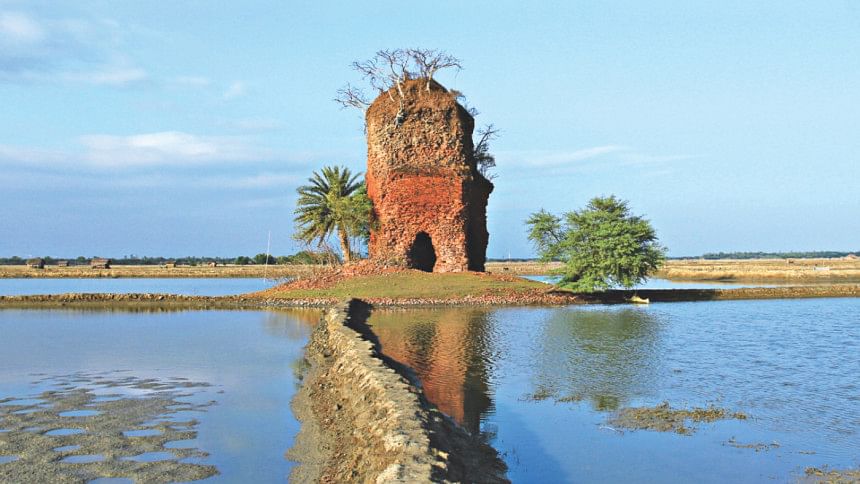
In this short article, I humbly attempt to engage the readers and equip them with some facts about olden Bangladesh that once were linked to historical sites that now lie dormant and dilapidated – the decision to scrupulously imagine will, however, remain with the reader.
In unearthing stories of historical monuments, the best approach is often to unearth the story of the builder, or the one who intended to build the edifice. We will follow a similar approach. We will visit specific historical sites, mostly ones that are unfamiliar and overlooked, following the trail of a man who shaped the demographic, socio-cultural and political faces of pockets of our olden land. In today's article we follow the trail of the now lesser known Raja Pratapaditya, one of the Baro Bhuiyans, who independently reigned over 16th century Jessore and contributed much to the region's evolution.
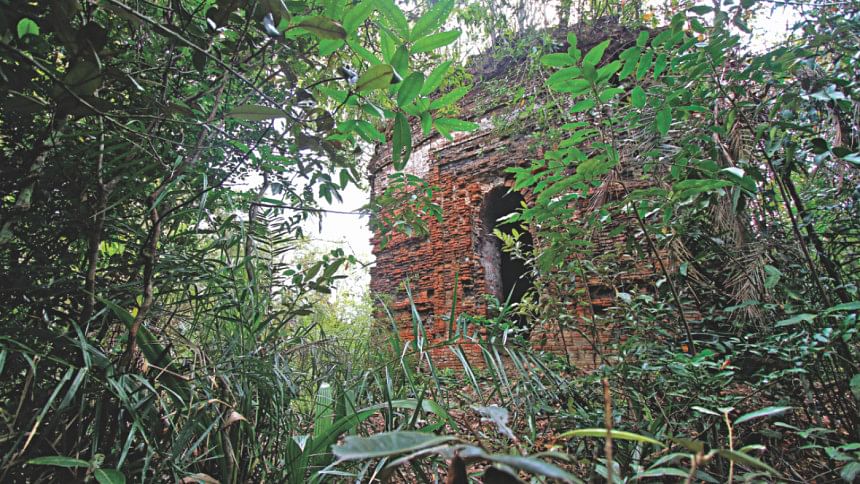
TRACING RAJA PRATAPADITYA'S STEPS: THE TRAIL
In the olden times, the marshy lands of Jessore were known as Yashohara, literally translating to “glory depriver.” The name was given believing that Yashohara would strip the glory of the olden capital of Bengal, Gaur (spread across present day Malda district, West-Bengal and Chapai Nawabganj, Rajshahi), for itself. It was Bikramaditya, Pratapaditya's father, who had established the township. Raja Pratapaditya was born in 1561, and at his birth a state seer (raj-jyotishi) predicted that Pratap would soon supplant his father. While Bikram did not kill the boy upon hearing the seer's premonition, as would be the norm for the time, out of apprehension, Pratap was sent to Agra. However, Bikram met his destiny on the very road he took to avoid it.
At Agra, Pratap won the favour of Emperor Akbar with his ready wit and royal ways and was granted his father's territory. Fulfilling the prophecy, Pratap then came back to Jessore and assassinated his entire family; but his uncle's son survived – he was the boy who lived and will be important later in our story. Pratapaditya prospered immensely, building numerous forts and temples and rapidly expanding his kingdom centered in Yashohara. Ultimately, he declared himself independent of the emperor of Delhi and became a part of the Baro Bhuiyan legacy. Location 01: Shyamnagar Rajbari
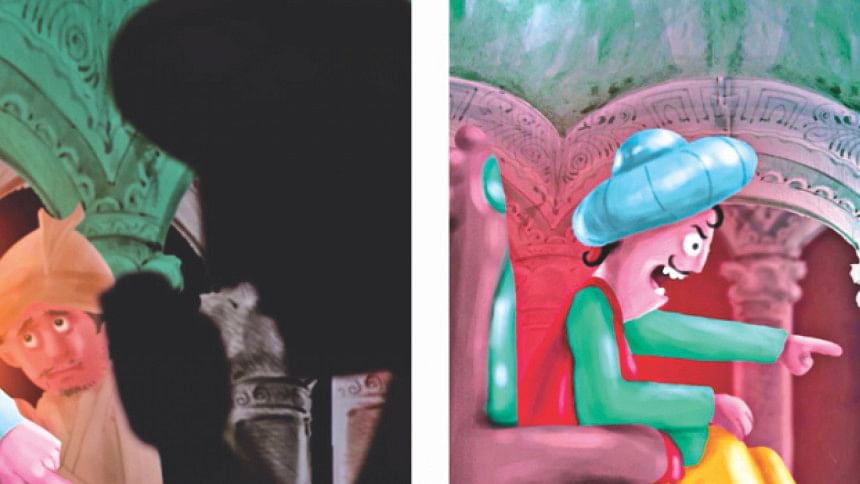
Google Map GPS coordinates: 22.336938, 89.117863
Historical accounts make it very difficult and remain vague to accurately verify where Pratapaditya's palace was during his reign. One account vicariously points towards the Ishwaripur Rajbari located in Shyamnagar, Satkhira to have been his abode. Logically it makes sense since present day Shyamnagar does fall inside the boundaries of then Pratapnagar. If we are to believe historian Satish Chandra's accounts, then, even though torn down by time's patient hands, the grandeur of the palace can still be felt, to this date. Divided into two sections, with a two-storeyed building in the front and the three-storeyed building at the back, sadly, the entire Rajbari now remains in ruins. Adding to the serenity of the landmark is a pond (which carries much significance, as we shall see near the end of Pratap's story) and another brick structure called the hawa khana where the royals supposedly spent their time sipping cups of tea, perhaps with their pinkies pointed upwards. Historical accounts of lavish life within the palace is rampant and is rattled with influences from the European clothing line, fine wine, horse racing and other exquisite glamour. The timing of these luxuries is however doubtful – whether they were from Pratapaditya's days or from a time much later, it remain to be explored. In tracing Raja Paratp's trail, this would be the first pit-stop to achieve a deeper sensation of his lifestyle.
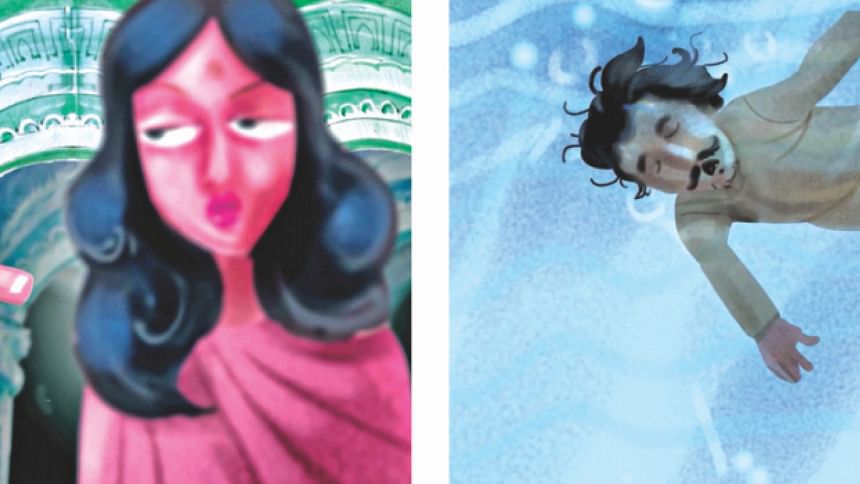
Location 02: The Damrail Navaratna Temple
Google Map GPS coordinates: 22.413636, 88.990953
During his reign Pratapaditya made frequent visits to a navaratna temple located right beside the present Indian border in Satkhira, in a village called Damrail. One can today find the remnants of the nine-spired temple, alas with all its spires demolished.
Constructed in 1582 by Pratapaditya's father, Bikramaditya, this temple is now literally in the middle of nowhere surrounded by paddy fields and shrimp hatcheries. Interestingly, it is believed that the main purpose of this temple was never for worship. Instead it is referred to as a samaj-mandir or a sabha-mandir. It was built as a meeting and consultation place for the locals with an assembly of nine sages. These nine wise men were referred to as nava-ratna or nine gems. This raises the question whether the temple actually ever followed the nine-spired architecture or was simply a misinterpretation of the nine sages. After assassinating his father, Pratap supposedly held numerous shalish in the temple with the local people wherein he passed his judgement on various social and criminal matters. This point had quickly become a place of local congregation with much socio-political influence.
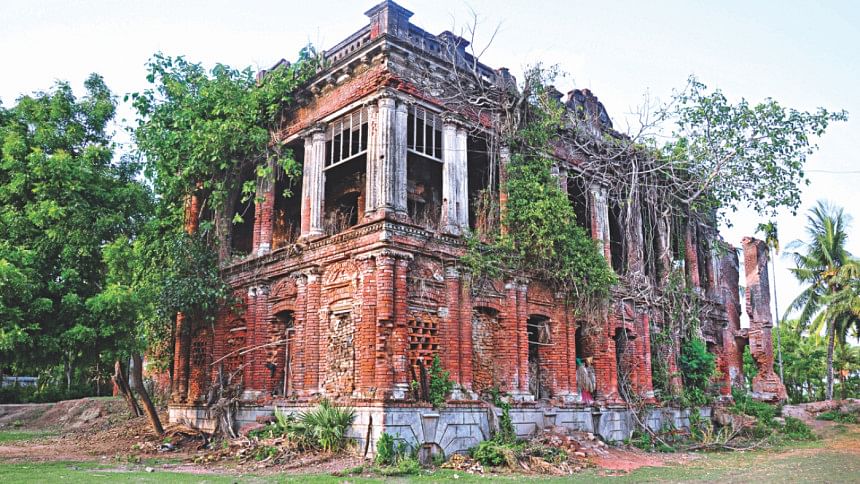
Location 03: The Jessoreshwari Temple
Google Map GPS coordinates: 22.306063, 89.112743
It is said that Pratapaditya's success was because of the Hindu goddess Kali, locally also known as Jessoreshwari, literally translating to the “goddess of Jessore.” Kali was so pleased with his devotion and generosity to his people that she promised him her support, unless he himself drove her away. To honour Kali, Pratap constructed the Jessoreshwari Temple which can be found in its renovated state in Shyamnagar, Satkhira, very near to the Ishwaripur palace. The temple however, in all honesty, has lost its charm of old, especially after renovation and a white makeover. The temple is also argued to have been a location of self-immolation for widows-- the practice of sati. The practice of self-immolation is closely linked to the mythology of Daksha Yaga wherein the Hindu goddess Sati first self-immolated, the origin behind the practice of sati. The final and perhaps most significant role of the Jessoreshwari Temple is that it is believed to be of the 51 Sati Peeths. After Sati's self-immolation, various parts of her body, scattered to 51 pieces, are believed to have fallen on various locations, and Jessoreshwari represents the site where Sati's palm fell. As part of the 51-peeth pilgrimage scattered all over India, Pakistan, Nepal and Bangladesh, many Hindu pilgrims often visit this shrine. Suffices to say, this was a major point of religious influence in the region and was under Pratapaditya's control.
Things went relatively well for Pratapaditya during the first decade of his reign even though he faced constant pressure from various forces for domination. This was a time when emperor Akbar had already begun his conquest to take full control of the Ganges international trade route, the delta then dubbed as “the paradise of nations.” Pratapaditya himself is known to have had a massive army. Historical accounts cite Pratapaditya's army to be as large as 20,000 infantry forces, 500 war boats armed with cannons, and 45 tons of gunpowder. In addition to regular Mughal invasions, Portuguese and Arakanese pirates, with their base on Sandwip Island, also continuously raided the coastal regions to the south, the once flourishing port of Barishal, and Bhola island. Pratapaditya was constantly defending his lands from a sludge of invasions, a resilience which paved the way for him being title as one of the legendary Baro Bhuiyans.
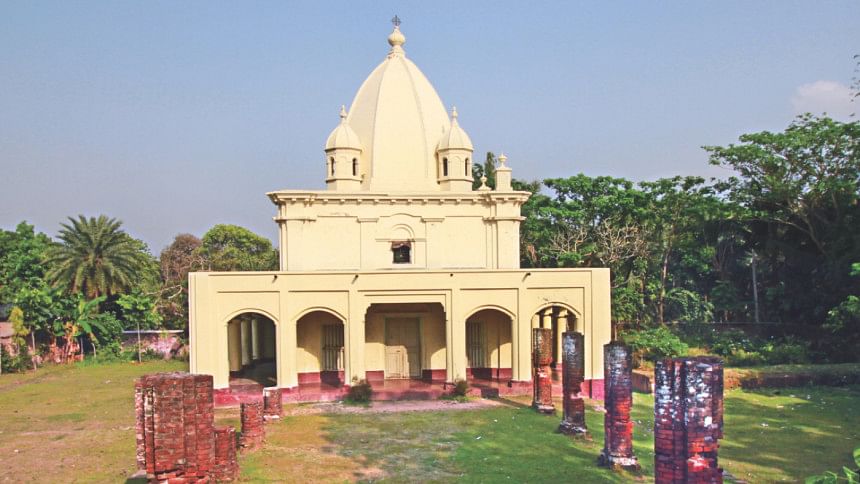
Location 04: The Shekher Tek Shibsha Temple of the Sundarbans
Google Map GPS coordinates: 22.117715, 89.548033
Perhaps one of the more stunning of Pratapaditya's remaining landmarks is an old temple, in fact the only ancient standing temple in our part of Sundarbans, located right at the heart of the forest in the Khulna range. To get to the temple one must cross the Adachai Forest Camp and onto Shekher Tek where the Shibsha Temple, also known as the Shekher Bari Temple is located, resting about a two-hour trek inside the forest from the Shibsha river. However, one must be very wary when venturing to take this path as Shekher Tek is known to be a tiger dense area with frequent alerts of tiger attack victims. If you do brave the journey, you will finally see the red brick structure peeking through the Sundari trees – the ancient erect declaring its former glory. Raja Pratapaditya, enduring the dangers of the then even denser Sundarbans, had established a township and a fort here in order to fight against the Arakanese and Portuguese pirates. The fort and the township no longer remain, however, the 25-foot temple itself, built by the Pratapaditya settlers during the early 1600s, still stands testament. Expectedly, the Shibsha Temple is a Kali temple. What is interesting is that even to this date, pilgrims visit this temple during early winter, often falling victim to tiger attacks.
Perhaps it was the continuous conflict and the accompanying mental strain that led to changes in Pratap himself. History accounts Pratap to have slowly transformed into an unkind and harsh ruler, ruthlessly killing anyone who went against his laws. According to the lore, Kali began to detest Pratap's pitiless actions and grew anxious to revoke her blessing. One day she assumed the form of the Raja's daughter and appeared before him in court. As women were forbidden to enter the court room, Pratapaditya became furious. He ordered his own daughter to leave the palace and never to return. Kali then revealed herself and told him that he would no longer have her blessing. The lore continues to account that Pratap's downfall began from his own family. Remember the boy who lived? Pratap's uncle's son, the one Pratap failed to kill? Pratap's wife picked up the child and raised him in their own home. In 1608, after Jahangir had taken over the Mughal empire, the boy went to the emperor and claimed justice. Seemingly, this triggered the sequence of events that led to Pratap's downfall.
Under the emperor's orders, the Mughal general, Islam Khan, arrived in Bengal in 1608 and was appointed with the task of ensuring dominance over the Baro Bhuiyans. After defeating Isa Khan, the most notable and chief of the Baro Bhuiyans, Islam Khan focused the entirety of the Mughal strength against Pratapaditya. The first battle took place around Salka, now in West Bengal, in 1611. This intense clash of almost a thousand war boats was mostly on the rivers. Pratap was defeated and he withdrew his forces to prepare for a second battle at Kagarghat, close to modern Satkhira. Pratapaditya had hastily constructed a fort in a strategic position along the Jamuna near Kagarghat in anticipation of the Mughal strategies. However, Pratap's now weakened war fleets were once again defeated, and Pratap was pushed back inside the fort. Islam Khan charged into the fort, breaking the entrance with war elephants, ultimately surmounting to Pratapaditya's defeat. Sadly, the Kagarghat fort no longer exists. If it were, it would provide the perfect ending to our Pratapaditya trail. Being able to envision the great battle while exploring the fort would be an experience unlike any offered by the previous locations. Pratapaditya's long resistance against the Mughals, 13 years even after Isa Khan's defeat, made him revered as one of the most powerful Baro Bhuiyans.
Recorded history is vague in telling us how exactly Pratapaditya died in 1611. One account says that while being taken to Delhi, Pratap killed himself by swallowing poison that he kept hidden in his ring. The other story is more interesting. Pratapaditya was indeed taken to a prison in Delhi. There he had requested the company of two pigeons. Upon his execution, the pigeons were to be set free and his family was instructed to drown themselves at the sight of these pigeons. However, to much surprise and with the help of some bribe, the emperor forgave the raja. But Pratap had made one fatal mistake. He had left the cage door open and the two pigeons escaped. By the time Pratap could reach his family at the Ishwaripur palace, the pigeons had arrived, and his family was already dead. The grief of this incident made Pratap drown himself. If this account is indeed true, then the pond beside the hawa khana in his palace is where Pratap and his family now lie in eternal slumber.
Thus ended the saga of Maharaja Pratapaditya. If the land could indeed speak of Pratapaditya, it would be a ballad of bravery, treachery and tragedy. Will you travel your country and meticulously imagine the ballad it sings?
By Adnan M. S. Fakir
Photos and Artwork: Finding Bangladesh Team

 For all latest news, follow The Daily Star's Google News channel.
For all latest news, follow The Daily Star's Google News channel. 



Comments